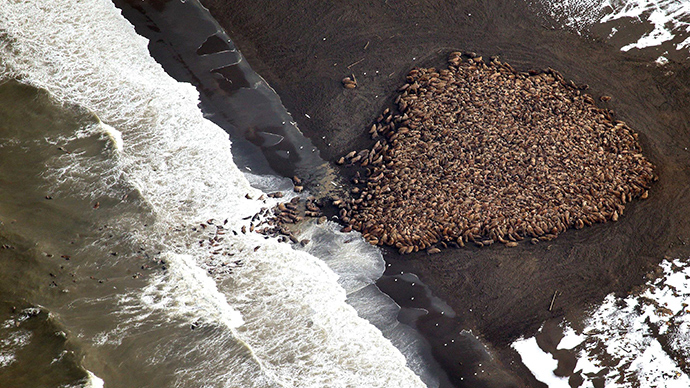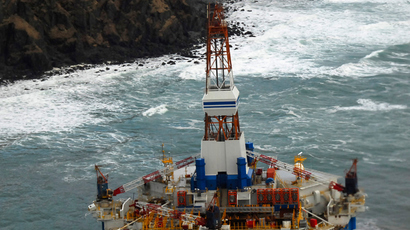35,000 walruses forced onto land in Alaska due to decrease in Arctic Sea ice

Record numbers of Pacific walruses have come ashore in northwest Alaska after being unable to find ice in the Arctic waters to rest and feed themselves. The enormous gathering has caused further concerns over global climate change.
An estimated 35,000 walruses were photographed last week, all
gathered on a beach about five miles north of Point Lay village
in Alaska, according to the US National Oceanic and Atmospheric
Administration (NOAA).
Spotted during NOAA's annual aerial survey, the arctic marine
mammals were forced ashore after failing to find sea ice,
according to the scientists.
Unlike seals, walruses cannot swim indefinitely, and they use ice
to rest, or "haul out," pulling themselves onto a solid
surface. Walruses also use ice as a diving platform to reach
food, and females give birth on the surfaces.

Walruses are currently gathering in vast numbers on land near the
Chukchi Sea, raising further concerns of a warming climate.
"The massive concentration of walruses onshore, when they
should be scattered broadly in ice-covered waters, is just one
example of the impacts of climate change on the distribution of
marine species in the Arctic," Margaret Williams, managing
director of the World Wildlife Fund's (WWF) Arctic program, said
in a statement.
A report from the National Snow and Ice Data Center on September
22 said that Arctic Sea ice had reached its lowest levels of the
year on September 17 – the sixth-lowest amount on record.
"Not since records began has the region of the North Pacific
Ocean been so warm for so long," the NOAA report stated.
According to NOAA, the large haul-outs are a relatively new
phenomenon, with the first ones spotted in 2007. The WWF says
other haul-outs have been reported to the west of Alaska, on
Russian shores.















